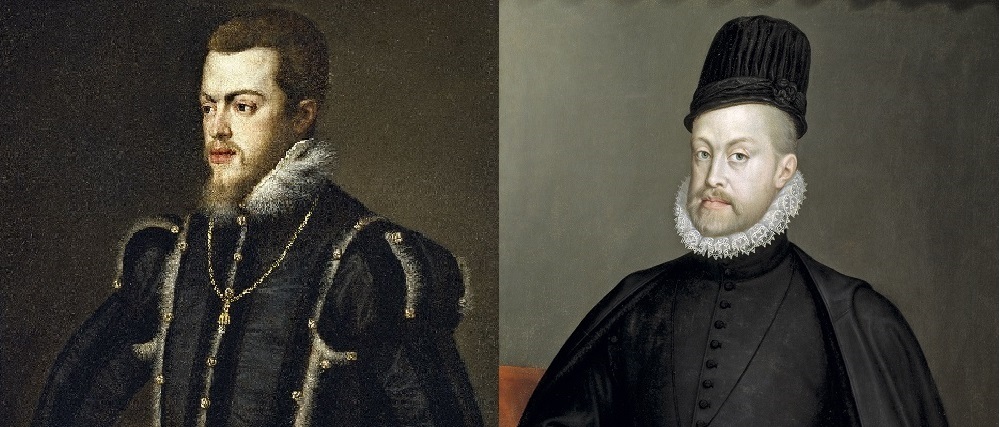Philip II of Spain
Posted on 2nd February 2021
Philip was born on 21 May 1527 at the Palacio de Pimentel in Valladolid, Spain, the only son of the Holy Roman Emperor Charles V and Isabella of Portugal.
He spent much of his early life in the care of his mother, and was educated as befitted his status, however his mother died in 1539 when Philip was only twelve years-old.
In 1543 Philip married Princess Maria of Portugal and in 1545 she gave birth to a son, Don Carlos of Spain, however Maria died a few days after the birth.
Philip started to gain control of territories at a young age, although with advisers to assist him. He had already become the Duke of Milan in 1540 and now aged sixteen in 1543 he was given the Regency of Spain.
In 1547 Philip moved to the Netherlands. He was unpopular there and later returned to Spain. During his reign, he fought a never-ending battle to eradicate Protestantism in the Netherlands, finally leading to open warfare in 1568. Battles with the Netherlands continued way after Philips death, until they were declared an independent state in 1648.
On 25 July 1554 Philip married Queen Mary I of England at Winchester Cathedral. This was a political marriage for Philip and to elevate his position, Charles V abdicated the throne of Naples and Sicily to Philip, as well as his claim to the Kingdom of Jerusalem.
This marriage was unpopular with Marys government as they believed she should marry an Englishman, not a foreigner. Being also unpopular with her people, the marriage led to rebellion in England. It was believed that as Spain was a Catholic nation, this marriage would further cement the Catholic religion on England.
In 1555 Charles V abdicated the Spanish throne in favour of his son, and on 16 January 1556 Philip was crowned King of Spain in his absence, for he did not return to Spain until two years later after the death of his father.
Mary and Philip ruled together as King and Queen of England and Ireland however this did not last long. Mary died childless in 1558, leaving Philip with no rights to the English throne.
Shortly after Marys death, Philip showed an interest in marrying her half-sister Queen Elizabeth I of England, however to secure peace with France he decided to marry Princess Elisabeth of Valois, daughter of Henry II of France in January 1560.
This marriage did not produce a male heir, only two daughters, although Elisabeth died in 1568, a year after the birth of her second child.
Philip married again in 1570 by proxy to Anne of Austria. This marriage produced five children, but only one survived into adulthood, his successor, the future Philip III of Spain. Philips first son Don Carlos had been imprisoned by his father, and died during his imprisonment.
In 1581 Philip extended his kingdom even further when he took the throne of Portugal.
Queen Elizabeth I had ruled England since 1558, and had returned it to a Protestant state. This angered Philip as he was a devout Catholic, and in 1587 he made plans for a Catholic crusade to invade England.
In August 1588 Philip sent the Spanish Armada, a fleet of 130 ships across the channel, however he was to ignore the advice of the commanders which led to humiliation and defeat.
The ships were unable to land on the English coast as there were no deep bays to accommodate them. They were also struck by storm at sea with many of their ships being destroyed.
The English and Spanish met in a tightly fought, but not huge battle and the Spanish were forced into an embarrassing defeat; Philip had failed in his invasion of England.
During Philip II’s reign, Spain would reach the height of their power and influence. This was known as the Golden Age.
He held many titles including, King of Spain, Portugal, Naples and Sicily, and Burgundy. He was King of England and Ireland, during his marriage to Mary I of England and also King of the seventeen provinces of the Netherlands.
Philip II of Spain, known as ‘Philip the Prudent’ died of Cancer on 15 September 1598 at El Escorial, near Madrid.
Tagged as: Junior Tudors
Share this post:





